Belgian Malinois vs. German Shepherd: Choosing the Right Dog for You

Belgian Malinois vs. German Shepherd. Both the Belgian Malinois and German Shepherd are celebrated for their intelligence and versatility. They’re go-to choices for families and working professionals but shine in distinct ways.
While the German Shepherd is known for calm loyalty, the Belgian Malinois brings unmatched energy and athleticism. Choosing the right breed depends on your lifestyle and what you want in a canine companion.
For a deeper look into the Belgian Malinois, check out 10 Fascinating Facts About Belgian Malinois You Need 2024.
Table of Contents
Overview of the Belgian Malinois
The Belgian Malinois is often described as a powerhouse of agility, intelligence, and unwavering loyalty. This dynamic breed has become a favorite in various roles, from herding to police work. Let’s dive into what makes the Belgian Malinois such a standout.
History and Origin
The Belgian Malinois traces its roots back to Belgium, where it was bred as one of four Belgian Shepherd varieties. Initially developed in the late 19th century, the Malinois was recognized for its exceptional herding abilities and adaptability.
Named after the city of Malines, this breed quickly became a prized working dog for farmers and shepherds alike. Over time, its intelligence and energy became popular in military and law enforcement circles worldwide. For more detailed insights, you can visit the American Kennel Club profile on Belgian Malinois.
Physical Characteristics
 Photo by Laura Paredis
Photo by Laura Paredis
This medium-sized breed is sleek and powerful. The Belgian Malinois typically stands between 22 to 26 inches tall at the shoulder and weighs around 40 to 80 pounds. Its coat is short, weather-resistant, and usually ranges from fawn to mahogany with a black mask. The Malinois’ almond-shaped, dark eyes exude alertness and intelligence. Thanks to its athletic build, it thrives in physically demanding roles. Learn more about the breed standards on the Britannica’s Belgian Malinois page.
Temperament and Behavior
Belgian Malinois are often described as confident, loyal, and highly focused. Their protective instincts make them excellent guard dogs, while their playful and trainable nature allows them to excel in family environments when adequately socialized.
However, their boundless energy requires an owner who can provide consistent leadership and companionship. Constant stimulation keeps them mentally healthy—without it, they may resort to destructive habits. Want insights on whether Belgian Malinois fits your home life? Check out Are Belgian Malinois Good Dogs?
Training and Exercise Needs
Training a Belgian Malinois can feel like working with a gifted athlete—challenging but rewarding. These dogs are quick learners, ideal candidates for advanced obedience, agility, and protection work. However, they aren’t suited for sedentary lifestyles.
They need at least 1-2 hours of daily exercise through walks, hikes, or active games like fetch. Mental challenges, such as puzzle toys or training sessions, are just as crucial to keeping them sharp. For more on finding the right training path, visit Dog Breed Guide: Companion Selection Advice.
Common Health Issues
The Belgian Malinois is generally a healthy breed but may be prone to some genetic conditions. Common concerns include:
- Hip and elbow dysplasia – Abnormal joint development can lead to arthritis.
- Progressive Retinal Atrophy (PRA) – A degenerative eye disorder that can result in blindness.
- Epilepsy – Some Malinois are predisposed to seizures.
- Bloat (Gastric Torsion) – A life-threatening condition that affects deep-chested dogs.
Routine vet check-ups and a healthy diet are crucial to your Malinois’ well-being. For detailed care tips, The Spruce Pets offers a comprehensive Belgian Malinois Care Guide.
Overview of the German Shepherd
The German Shepherd is one of the most recognized and revered dog breeds worldwide. Known for its versatility, intelligence, and loyalty, this breed has captured the hearts of families, professionals, and dog enthusiasts alike. Whether working alongside law enforcement or playing fetch in the backyard, the German Shepherd consistently shines.
History and Origin
The German Shepherd traces its roots back to Germany in the late 19th century. Originally bred to be the ultimate herding dog, Max von Stephanitz spearheaded efforts to standardize the breed. His goal was to create a dog that excelled in work and form.
Over time, their loyal temperament and extraordinary intelligence made them invaluable in roles beyond herding, including police work, military service, and more. Learn more about their fascinating history at AKC’s German Shepherd Dog Breed Information.
Physical Characteristics

Photo by cottonbro studio
German Shepherds are medium to large-sized dogs, typically standing 22 to 26 inches tall at the shoulders and weighing between 50 to 90 pounds. Their double-layered coat can be short or long and normally comes in black and tan, sable, or solid black. Their erect ears and strong, muscular build give them a confident and noble appearance. For a closer look at their physical traits, DogTime’s Breed Profile on German Shepherds offers additional insights.
Temperament and Behavior
Renowned for their intelligence, German Shepherds are quick learners with a strong work ethic. They are fiercely loyal to their families, often forming deep, protective bonds. Their confident yet calm demeanor makes them excellent companions, though they can be wary of strangers. Curious and energetic, they need mental stimulation to thrive. Interested in learning about how these dogs behave in various environments? Check out this German Shepherd Breed Guide.
Training and Exercise Needs
German Shepherds are highly trainable but require consistent and firm guidance. Positive reinforcement works wonders with this breed, as they are eager to please. Daily exercise is essential—aim for at least an hour of physical activity like walking, running, or agility training. They also thrive when their minds are kept busy; puzzle toys or obedience courses are great options. To pick the ideal training path, Dog Breeds Training and Tips provides actionable advice.
Common Health Issues
Like many large breeds, German Shepherds are prone to specific health concerns. Here are some common ones to keep in mind:
- Hip and Elbow Dysplasia: Joint conditions can cause pain and mobility issues.
- Degenerative Myelopathy: A disease affecting the spinal cord, leading to eventual paralysis.
- Bloat (Gastric Torsion): A life-threatening stomach condition.
- Exocrine Pancreatic Insufficiency (EPI): A digestive disorder requiring lifelong enzyme supplementation.
Regular vet check-ups and a balanced diet ensure your German Shepherd remains healthy. For nutritional tips tailored to large breeds like German Shepherds, visit Homemade Dog Meal Recipes.
German Shepherds are a breed like no other—a testament to how remarkable these dogs indeed are in terms of both abilities and companionship.
Belgian Malinois vs. German Shepherd: Key Differences Explored
The Belgian Malinois and German Shepherd are two of the most respected dog breeds in the world. Whether you’re looking for a hardworking companion or a devoted family pet, these breeds stand out uniquely. Let’s compare them based on working roles, family compatibility, training ease, exercise needs, and grooming requirements.
Working Capabilities: Who Leads in the Field?
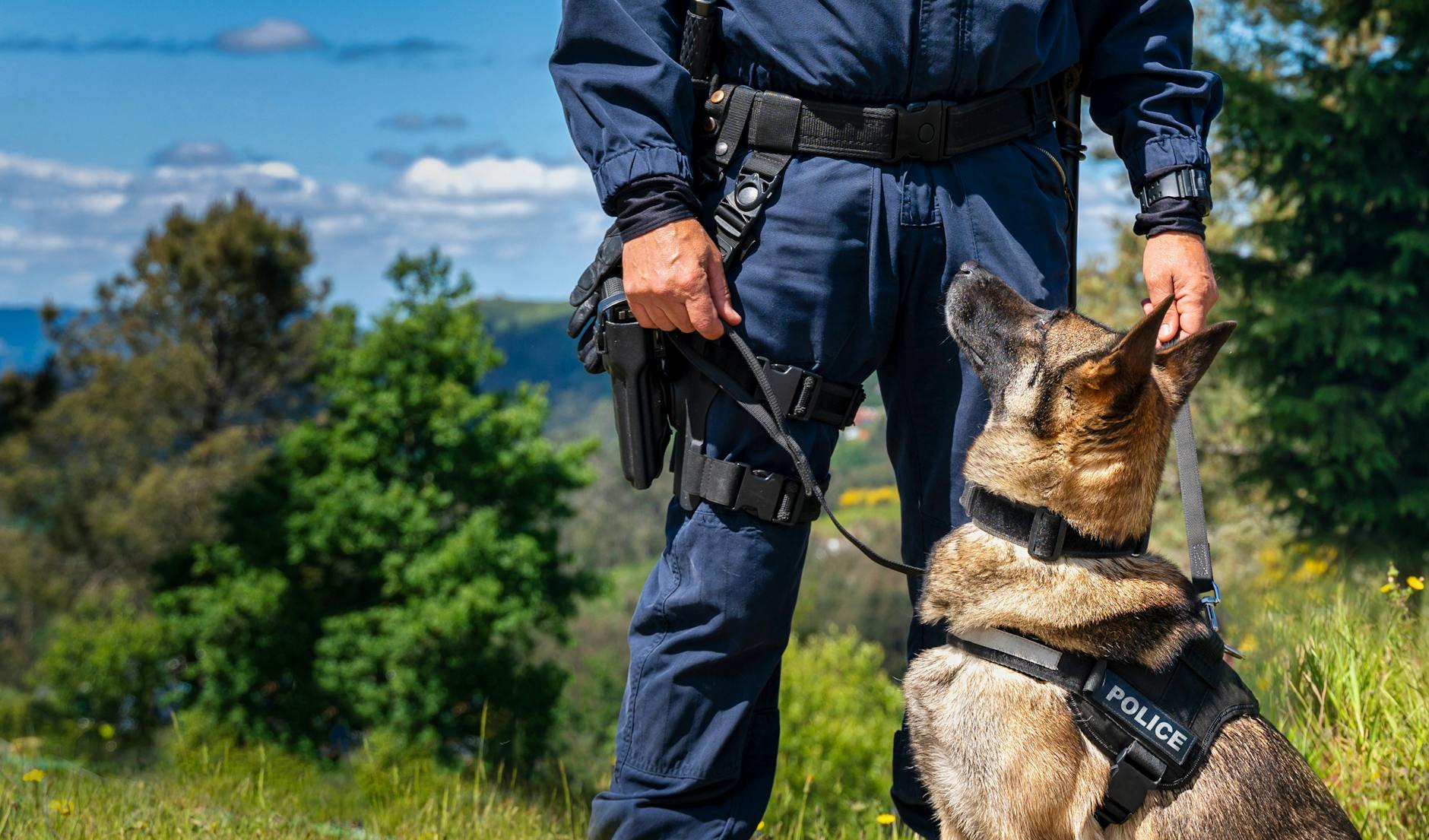
Photo by Armando Oliveira
Both breeds excel in service roles, famously utilized in law enforcement, military, and search-and-rescue missions. The Belgian Malinois, with its lighter frame, is known for speed and agility, often favored for K9 units that require quick and precise movements. On the other hand, the German Shepherd has unparalleled strength and resilience, making it a favorite for tackling endurance tasks and protection work.
Want to dive deeper? Learn more about how these breeds compare in police and military applications from AKC’s Comparison Guide.
Family Compatibility: Which Is the Better Fit?
When it comes to family life, the German Shepherd generally emerges as the more adaptable choice. They form strong bonds with every family member and have a calm demeanor, making them excellent for households with children. The Belgian Malinois, while loyal, often attaches to one specific person, sometimes displaying difficulty adjusting to a large family dynamic.
If a family-friendly pet is your goal, consider checking out our guide on finding the best breed for your home at Find The Best Dog Breed For You.
Training Comparison: Trainability of Both Breeds
Training either breed can be rewarding but requires dedication. The Belgian Malinois is a quick learner with unmatched focus, but their high energy levels mean they’re better suited to experienced handlers. German Shepherds are equally intelligent and obedient but are slightly more forgiving of beginners. Positive reinforcement works well for both.
Want useful training tips? Head over to Dog Breeds Training and Tips.
Exercise and Activity Levels: Energy to Spare
Both breeds have very high exercise needs, but the Belgian Malinois takes the lead in energy levels. They require at least 2 hours of physical and mental exercise daily, making them better for active owners. German Shepherds need about 1-2 hours of activity, often thriving with walks, runs, or agility play.
Whether it’s high-energy games or outdoor adventures, meeting these needs is crucial to a happy dog. Explore more active dog breeds with Belgian Malinois vs German Shepherds – Rover.com.
Grooming and Maintenance: Which Breed Is Easier?
The German Shepherd’s double coat requires regular brushing to manage shedding, especially during seasonal changes. In contrast, the Belgian Malinois has a shorter coat, which is easier to maintain, although they, too, shed year-round. Grooming routines for both include basic care like nail trimming and ear cleaning.
If you’re looking for tips on managing dog hygiene, check out this helpful guide from Shameless Pets.
Choosing the Right Breed for You
Selecting the perfect dog breed is more than deciding on looks or personality traits—it’s about finding a four-legged companion that aligns with your daily life, energy levels, and future goals. The Belgian Malinois and German Shepherd are incredible breeds, but your decision should boil down to what fits your specific situation.
Lifestyle Considerations
Your lifestyle is crucial in determining which breed is the better match. Are you someone who loves outdoor activities and staying active? Or do you prefer quiet evenings at home with a loyal companion?
The Belgian Malinois is a high-energy dog that thrives in environments with constant physical and mental stimulation. If you’re a runner, hiker, or someone who spends hours outdoors, the Malinois will keep pace with your adventurous lifestyle.
On the other hand, German Shepherds combine energy with adaptability. While they also require regular exercise, they are better suited for families and individuals needing a somewhat calmer presence at times. They excel in both bustling family households and quieter setups. If you’re unsure about your preferences or needs, tools like the AKC’s Breed Selector Tool can help guide your decision.
Training Commitment
Dog lovers often underestimate the time required to effectively train and socialize specific breeds. The Belgian Malinois is a dog that thrives on focus and engagement. Training them feels like working with an elite athlete—they’re fast learners but require much effort.
Consistency, patience, and experience are crucial to successfully raising a Malinois. They’re best suited to owners with prior experience with high-drive working dogs.
German Shepherds, while also intelligent and trainable, are slightly more forgiving for first-time owners or those without extensive experience. They respond well to positive reinforcement techniques and can adapt to various training styles.
However, they still require structure and commitment. Are you curious about training tips? You can explore Dog Breeds Training and Tips for practical advice.
Long-term Care and Costs
When bringing a dog into your life, consider the time and energy required and the long-term financial commitment. Belgian Malinois, for instance, may have lower grooming costs due to their shorter coat, but their high-demand activity levels mean you’ll likely invest heavily in professional training, premium food, and gear for mental and physical stimulation.
While slightly less intense, German Shepherds come with their own set of expenses. Their double coat requires regular grooming to manage shedding, and like all large breeds, they are prone to specific health concerns, such as hip dysplasia.
Regular vet visits, pet insurance, and a quality diet are necessary considerations for both breeds. For insights into budgeting for a dog’s lifetime, check out What It Means To Be A True Dog Person.
For potential dog owners seriously considering their options, quizzes like Purina’s Dog Breed Selector are valuable tools to understand better which breed may align with your current and future lifestyle.
FAQ
Choosing between the Belgian Malinois and German Shepherd can raise several questions, as both breeds are highly regarded yet distinct. Below, we address some of the most common queries to help you make an informed decision.
Which Breed Is More Family-Friendly?
If you’re looking for a family pet, the German Shepherd is generally a better choice. They are known for forming strong, protective bonds with every family member, including children. On the other hand, Belgian Malinois often attach to one person and may find it challenging to adapt to large or bustling households.
Both breeds require proper training and socialization to thrive in a family environment. For insights into what makes a breed suitable for families, visit Find The Best Dog Breed For You.
Do Both Breeds Require the Same Exercise Levels?
No, their exercise needs differ. While both breeds are high-energy, the Belgian Malinois has exceptional stamina and requires at least 2 hours of physical and mental stimulation daily.
Activities like hikes, agility training, and mentally stimulating games are ideal. While also active, the German Shepherd is slightly less demanding with 1-2 hours of exercise being sufficient for most. It’s essential to match their energy levels with your lifestyle.
Are They Prone to Different Health Issues?
Yes, both breeds have unique health predispositions. The Belgian Malinois tends to have fewer health issues overall but is still prone to hip and elbow dysplasia and eye disorders like Progressive Retinal Atrophy.
Meanwhile, German Shepherds are more susceptible to conditions such as hip dysplasia, degenerative myelopathy, and Exocrine Pancreatic Insufficiency (EPI). Regular check-ups and a high-quality diet are crucial for both. Check out our guide on Homemade Dog Meal Recipes for tips on keeping both breeds healthy.
Are Belgian Malinois and German Shepherds Equally Trainable?
Both breeds are exceptionally trainable due to their high intelligence and work ethic. However, the Belgian Malinois is better suited for experienced handlers who can keep up with their boundless energy and focus. In contrast, the German Shepherd is more forgiving for first-time dog owners. Regardless of experience, consistency and positive reinforcement work for both breeds. For training techniques, explore Dog Breeds Training and Tips.
Which Breed Is Better for First-Time Dog Owners?
German Shepherds are generally more beginner-friendly. Their adaptable temperament and slightly lower exercise intensity make them easier to manage for first-timers. The Belgian Malinois, while brilliant and loyal, can be overwhelming due to their high energy and strong drive.
For further guidance, browse articles like Belgian Malinois vs German Shepherds – Rover.com to understand more about owning these breeds.
What Are Their Differences in Grooming Needs?
Both breeds shed year-round, but the German Shepherd’s double coat demands more upkeep, especially during shedding seasons. Weekly brushing is necessary to keep their coat healthy. Meanwhile, the Belgian Malinois has a short, weather-resistant coat that’s easier to maintain with occasional grooming.
Basic care like nail trimming and ear cleaning is vital for both breeds. Need tips? Read this Grooming Guide for German Shepherds vs Belgian Malinois.
Are They Both Good for Work Roles?
Both breeds excel in roles such as law enforcement, search-and-rescue, and military service. The Belgian Malinois, with its agility and speed, is often preferred for dynamic tasks requiring quick movements.
The German Shepherd, known for its strength and endurance, shines in protection roles and functions requiring a calm yet commanding presence. Learn how these breeds compare in working environments at Belgian Malinois vs German Shepherd Differences.
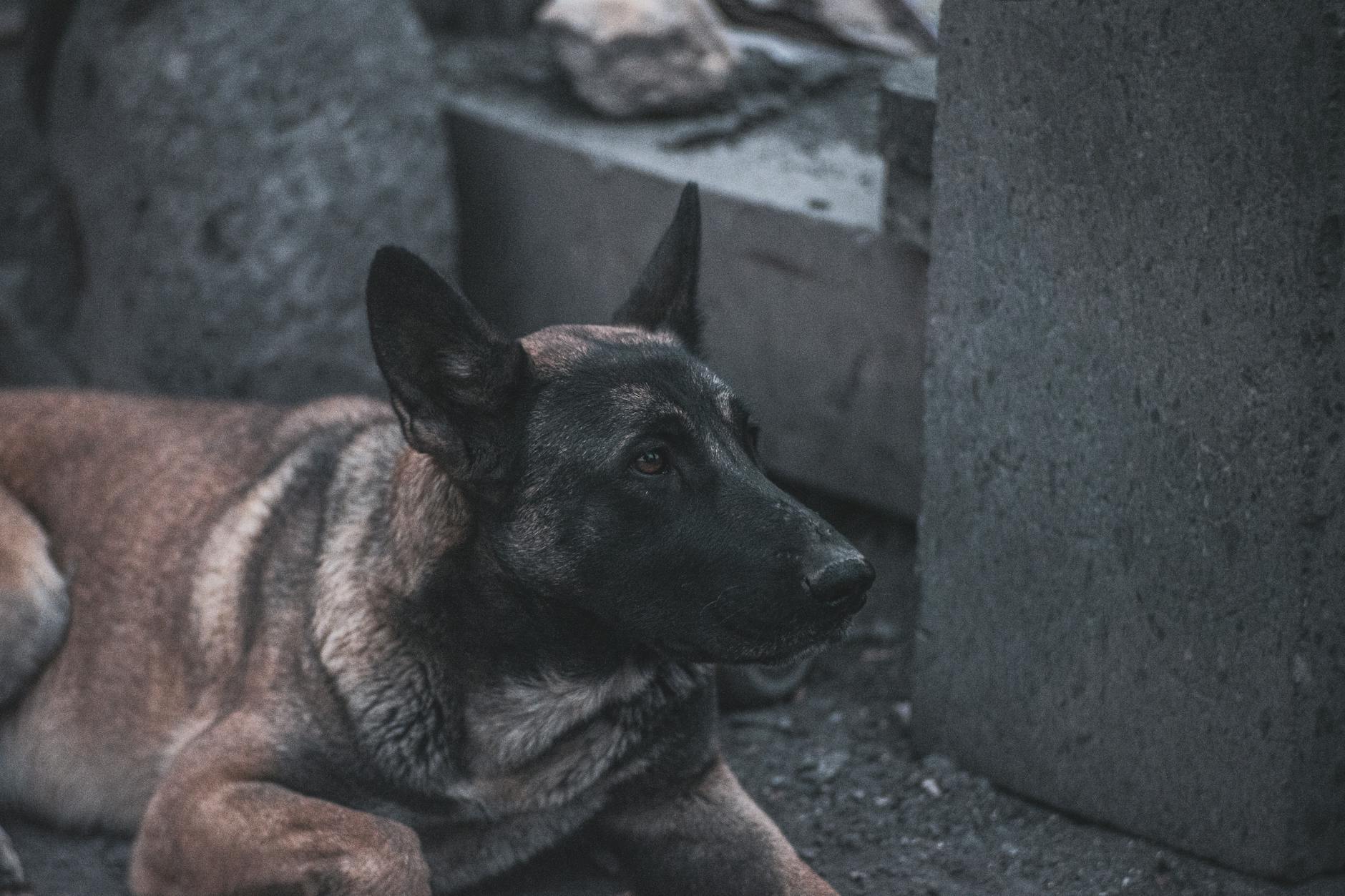
Photo by Juan Trevilla Martínez
Conclusion
When deciding between the Belgian Malinois and German Shepherd, it’s clear that each breed offers a unique set of traits and requirements. These dogs are exceptional in their ways, whether it’s the athleticism and sharp focus of the Belgian Malinois or the loyal and balanced temperament of the German Shepherd.
Choosing the right breed isn’t about which dog is “better,” but which aligns more harmoniously with your lifestyle and preferences.
For guidance in making this decision, you may find this Belgian Malinois vs German Shepherds Overview on Rover particularly helpful, as it outlines key differences in temperament and care. Understanding these will ensure your new furry friend is ideally suited to your home and lifestyle.
The Belgian Malinois and German Shepherd are celebrated for their intelligence and versatility. They’re go-to choices for families and working professionals but shine in distinct ways. While the German Shepherd is known for calm loyalty, the Belgian Malinois brings unmatched energy and athleticism.
Choosing the right breed depends on your lifestyle and what you want in a canine companion. For a deeper look into the Belgian Malinois, check out 10 Fascinating Facts About Belgian Malinois You Need 2024.
Overview of the Belgian Malinois
The Belgian Malinois is often described as a powerhouse of agility, intelligence, and unwavering loyalty. This dynamic breed has become a favorite in various roles, from herding to police work. Let’s dive into what makes the Belgian Malinois such a standout.
History and Origin
The Belgian Malinois traces its roots back to Belgium, where it was bred as one of four Belgian Shepherd varieties. Initially developed in the late 19th century, the Malinois was recognized for its exceptional herding abilities and adaptability.
Named after the city of Malines, this breed quickly became a prized working dog for farmers and shepherds alike. Over time, its intelligence and energy became popular in military and law enforcement circles worldwide. You can visit the American Kennel Club profile on Belgian Malinois for more detailed insights.
Physical Characteristics
 Photo by Laura Paredis
Photo by Laura Paredis
This medium-sized breed is sleek and powerful. The Belgian Malinois typically stands between 22 to 26 inches tall at the shoulder and weighs around 40 to 80 pounds. Its coat is short, weather-resistant, and usually ranges from fawn to mahogany with a black mask. The Malinois’ almond-shaped, dark eyes exude alertness and intelligence. Thanks to its athletic build, it thrives in physically demanding roles. Learn more about the breed standards on the Britannica’s Belgian Malinois page.
Temperament and Behavior
Belgian Malinois are often described as confident, loyal, and highly focused. Their protective instincts make them excellent guard dogs, while their playful and trainable nature allows them to excel in family environments when properly socialized.
However, their boundless energy requires an owner who can provide consistent leadership and companionship. Constant stimulation keeps them mentally healthy—without it, they may resort to destructive habits. Want insights on whether Belgian Malinois fits your home life? Check out Are Belgian Malinois Good Dogs?.
Training and Exercise Needs
Training a Belgian Malinois can feel like working with a gifted athlete—challenging but rewarding. These dogs are quick learners, making them ideal candidates for advanced obedience, agility, and protection work. However, they aren’t suited for sedentary lifestyles. They need at least 1-2 hours of daily exercise, whether through walks, hikes, or active games like fetch. Mental challenges, such as puzzle toys or training sessions, are just as crucial to keeping them sharp. For more on finding the right training path, visit Dog Breed Guide: Companion Selection Advice.
Common Health Issues
The Belgian Malinois is generally a healthy breed but may be prone to some genetic conditions. Common concerns include:
- Hip and elbow dysplasia – Abnormal joint development can lead to arthritis.
- Progressive Retinal Atrophy (PRA) – A degenerative eye disorder that can result in blindness.
- Epilepsy – Some Malinois are predisposed to seizures.
- Bloat (Gastric Torsion) – A life-threatening condition that affects deep-chested dogs.
Routine vet check-ups and a healthy diet are crucial to your Malinois’ well-being. For detailed care tips, The Spruce Pets offers a comprehensive Belgian Malinois Care Guide.
Overview of the German Shepherd
The German Shepherd is one of the most recognized and revered dog breeds worldwide. Known for its versatility, intelligence, and loyalty, this breed has captured the hearts of families, professionals, and dog enthusiasts alike. Whether working alongside law enforcement or playing fetch in the backyard, the German Shepherd consistently shines.
History and Origin
The German Shepherd traces its roots back to Germany in the late 19th century. Originally bred to be the ultimate herding dog, Max von Stephanitz spearheaded efforts to standardize the breed. His goal was to create a dog that excelled in both work and form.
Over time, their loyal temperament and extraordinary intelligence made them invaluable in roles beyond herding, including police work, military service, and more. Learn more about their fascinating history at AKC’s German Shepherd Dog Breed Information.
Physical Characteristics

Photo by cottonbro studio
German Shepherds are medium to large-sized dogs, typically standing 22 to 26 inches tall at the shoulders and weighing anywhere between 50 to 90 pounds. Their double-layered coat can be short or long and typically comes in colors like black and tan, sable, or solid black. Their erect ears and strong, muscular build give them a confident and noble appearance. For a closer look at their physical traits, DogTime’s Breed Profile on German Shepherds offers additional insights.
Temperament and Behavior
Renowned for their intelligence, German Shepherds are quick learners with a strong work ethic. They are fiercely loyal to their families, often forming deep, protective bonds. Their confident yet calm demeanor makes them excellent companions, though they can be wary of strangers. Curious and energetic, they need mental stimulation to thrive. Interested in learning about how these dogs behave in various environments? Check out this German Shepherd Breed Guide.
Training and Exercise Needs
German Shepherds are highly trainable but require consistent and firm guidance. Positive reinforcement works wonders with this breed, as they are eager to please. Daily exercise is essential—aim for at least an hour of physical activity like walking, running, or agility training. They thrive when their minds are kept busy as well; puzzle toys or obedience courses are great options. To pick the ideal training path, Dog Breeds Training and Tips provides actionable advice.
Common Health Issues
Like many large breeds, German Shepherds are prone to specific health concerns. Here are some common ones to keep in mind:
- Hip and Elbow Dysplasia: Joint conditions that can cause pain and mobility issues.
- Degenerative Myelopathy: A disease affecting the spinal cord, leading to eventual paralysis.
- Bloat (Gastric Torsion): A life-threatening stomach condition.
- Exocrine Pancreatic Insufficiency (EPI): A digestive disorder requiring lifelong enzyme supplementation.
Regular vet check-ups and a balanced diet are key to ensuring your German Shepherd remains healthy. For nutritional tips tailored to large breeds like German Shepherds, visit Homemade Dog Meal Recipes.
German Shepherds are a breed like no other—a testament to how remarkable these dogs truly are in terms of both abilities and companionship.
Belgian Malinois vs. German Shepherd: Key Differences Explored
The Belgian Malinois and German Shepherd are two of the most respected dog breeds in the world. Whether you’re looking for a hardworking companion or a devoted family pet, these breeds stand out in unique ways. Let’s compare them based on working roles, family compatibility, training ease, exercise needs, and grooming requirements.
Working Capabilities: Who Leads in the Field?

Photo by Armando Oliveira
Both breeds excel in service roles, famously utilized in law enforcement, military, and search-and-rescue missions. The Belgian Malinois, with its lighter frame, is known for speed and agility, often favored for K9 units that require quick and precise movements. On the other hand, the German Shepherd has unparalleled strength and resilience, making it a favorite for tackling endurance tasks and protection work.
Want to dive deeper? Learn more about how these breeds compare in police and military applications from AKC’s Comparison Guide.
Family Compatibility: Which Is the Better Fit?
When it comes to family life, the German Shepherd generally emerges as the more adaptable choice. They form strong bonds with every family member and have a calm demeanor, making them excellent for households with children. The Belgian Malinois, while loyal, often attaches to one specific person, sometimes displaying difficulty adjusting to a large family dynamic.
If a family-friendly pet is your goal, consider checking out our guide on finding the best breed for your home at Find The Best Dog Breed For You.
Training Comparison: Trainability of Both Breeds
Training either breed can be rewarding but requires dedication. The Belgian Malinois is a quick learner with unmatched focus, but their high energy levels mean they’re better suited to experienced handlers. German Shepherds are equally intelligent and obedient but are slightly more forgiving of beginners. Positive reinforcement works well for both.
Want useful training tips? Head over to Dog Breeds Training and Tips.
Exercise and Activity Levels: Energy to Spare
Both breeds have very high exercise needs, but the Belgian Malinois takes the lead in energy levels. They require at least 2 hours of physical and mental exercise daily, making them better for active owners. German Shepherds need about 1-2 hours of activity, often thriving with walks, runs, or agility play.
Whether it’s high-energy games or outdoor adventures, meeting these needs is crucial to a happy dog. Explore more active dog breeds with Belgian Malinois vs German Shepherds – Rover.com.
Grooming and Maintenance: Which Breed Is Easier?
The German Shepherd’s double coat requires regular brushing to manage shedding, especially during seasonal changes. In contrast, the Belgian Malinois has a shorter coat, which is easier to maintain, although they too shed year-round. Grooming routines for both include basic care like nail trimming and ear cleaning.
If you’re looking for tips on managing dog hygiene, check out this helpful guide from Shameless Pets.
Choosing the Right Breed for You
Selecting the perfect dog breed is more than just deciding on looks or personality traits—it’s about finding a four-legged companion that aligns with your daily life, energy levels, and future goals. Both the Belgian Malinois and German Shepherd are incredible breeds, but your decision should boil down to what fits your specific situation.
Lifestyle Considerations
Your lifestyle plays a crucial role in determining which breed is the better match. Are you someone who loves outdoor activities and staying active? Or do you prefer quiet evenings at home with a loyal companion by your side?
The Belgian Malinois is a high-energy dog that thrives in environments where physical and mental stimulation are constant. If you’re a runner, hiker, or someone who spends hours outdoors, the Malinois will keep pace with your adventurous lifestyle.
On the other hand, German Shepherds combine energy with adaptability. While they also require regular exercise, they are better suited for families and individuals needing a somewhat calmer presence at times. They excel in both bustling family households and quieter setups. If you’re unsure about your own preferences or needs, tools like the AKC’s Breed Selector Tool can help guide your decision.
Training Commitment
Dog lovers often underestimate the time required to train and socialize specific breeds effectively. The Belgian Malinois is a dog that thrives on focus and engagement. Training them feels like working with an elite athlete—they’re fast learners but demand a lot of effort.
Consistency, patience, and experience are crucial to successfully raising a Malinois. They’re best suited to owners who have prior experience with high-drive working dogs.
German Shepherds, while also intelligent and trainable, are slightly more forgiving for first-time owners or those without extensive experience. They respond well to positive reinforcement techniques and can adapt to a broad range of training styles.
However, they still require structure and commitment. Curious about training tips? You can explore Dog Breeds Training and Tips for practical advice.
Long-term Care and Costs
When bringing a dog into your life, consider not just the time and energy required but also the long-term financial commitment. Belgian Malinois, for instance, may have lower grooming costs due to their shorter coat, but their high-demand activity levels mean you’ll likely invest heavily in professional training, premium food, and gear for mental and physical stimulation.
German Shepherds, while slightly less intense, come with their own set of expenses. Their double coat requires regular grooming to manage shedding, and like all large breeds, they are prone to certain health concerns, such as hip dysplasia.
Regular vet visits, pet insurance, and a quality diet are necessary considerations for both breeds. For insights into budgeting for a dog’s lifetime, check out What It Means To Be A True Dog Person.
For potential dog owners seriously considering their options, quizzes like Purina’s Dog Breed Selector are also valuable tools to better understand which breed may align with your current and future lifestyle.
FAQ
Choosing between the Belgian Malinois and German Shepherd can raise several questions, as both breeds are highly regarded yet distinct. Below, we address some of the most common queries to help you make an informed decision.
Which Breed Is More Family-Friendly?
If you’re looking for a family pet, the German Shepherd is generally a better choice. They are known for forming strong, protective bonds with every family member, including children. On the other hand, Belgian Malinois often attach to one person and may find it challenging to adapt to large or bustling households.
That said, both breeds require proper training and socialization to thrive in a family environment. For insights into what makes a breed suitable for families, visit Find The Best Dog Breed For You.
Do Both Breeds Require the Same Exercise Levels?
No, their exercise needs differ. While both breeds are high-energy, the Belgian Malinois has exceptional stamina and requires at least 2 hours of physical and mental stimulation daily. Activities like hikes, agility training, and mentally stimulating games are ideal.
The German Shepherd, while also active, is slightly less demanding with 1-2 hours of exercise being sufficient for most. It’s important to match their energy levels with your lifestyle.
Are They Prone to Different Health Issues?
Yes, both breeds have unique health predispositions. The Belgian Malinois tends to have fewer health issues overall but is still prone to hip and elbow dysplasia, as well as eye disorders like Progressive Retinal Atrophy. Meanwhile, German Shepherds are more susceptible to conditions such as hip dysplasia, degenerative myelopathy, and Exocrine
Pancreatic Insufficiency (EPI). Regular check-ups and a high-quality diet are crucial for both. Check out our guide on Homemade Dog Meal Recipes for tips on keeping both breeds healthy.
Are Belgian Malinois and German Shepherds Equally Trainable?
Both breeds are exceptionally trainable due to their high intelligence and work ethic. However, the Belgian Malinois is better suited for experienced handlers who can keep up with their boundless energy and focus. In contrast, the German Shepherd is more forgiving for first-time dog owners. Regardless of experience, consistency and positive reinforcement work for both breeds. For training techniques, explore Dog Breeds Training and Tips.
Which Breed Is Better for First-Time Dog Owners?
German Shepherds are generally more beginner-friendly. Their adaptable temperament and slightly lower exercise intensity make them easier to manage for first-timers. The Belgian Malinois, while brilliant and loyal, can be overwhelming due to their high energy and strong drive.
For further guidance, browse articles like Belgian Malinois vs German Shepherds – Rover.com to understand more about owning these breeds.
What Are Their Differences in Grooming Needs?
Both breeds shed year-round, but the German Shepherd’s double coat demands more upkeep, especially during shedding seasons. Weekly brushing is necessary to keep their coat healthy. Meanwhile, the Belgian Malinois has a short, weather-resistant coat that’s easier to maintain with occasional grooming. Basic care like nail trimming and ear cleaning is vital for both breeds. Need tips? Read this Grooming Guide for German Shepherds vs Belgian Malinois.
Are They Both Good for Work Roles?
Both breeds excel in working roles such as law enforcement, search-and-rescue, and military service. The Belgian Malinois, with its agility and speed, is often preferred for dynamic tasks requiring quick movements.
The German Shepherd, known for its strength and endurance, shines in protection roles and tasks requiring a calm yet commanding presence. Learn how these breeds compare in working environments at Belgian Malinois vs German Shepherd Differences.

Photo by Juan Trevilla Martínez
Conclusion
When deciding between the Belgian Malinois and German Shepherd, it’s clear that each breed offers a unique set of traits and requirements. These dogs are exceptional in their own ways, whether it’s the athleticism and sharp focus of the Belgian Malinois or the loyal and balanced temperament of the German Shepherd.
Choosing the right breed isn’t about which dog is “better,” but instead, which one aligns more harmoniously with your lifestyle and preferences.
For guidance in making this decision, you may find this Belgian Malinois vs German Shepherds Overview on Rover particularly helpful, as it outlines key differences in temperament and care. Understanding these will ensure your new furry friend is perfectly suited to your home and lifestyle.

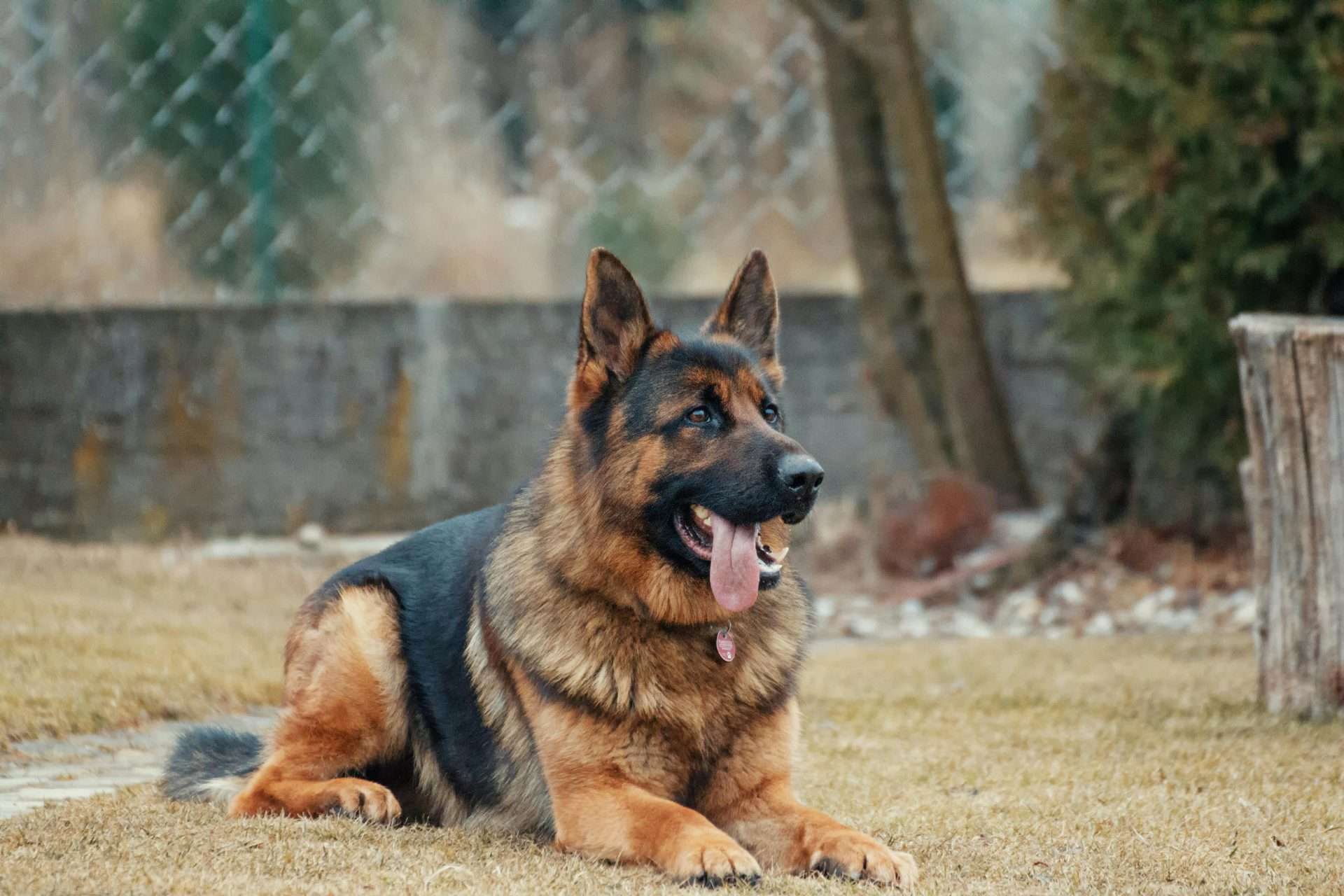
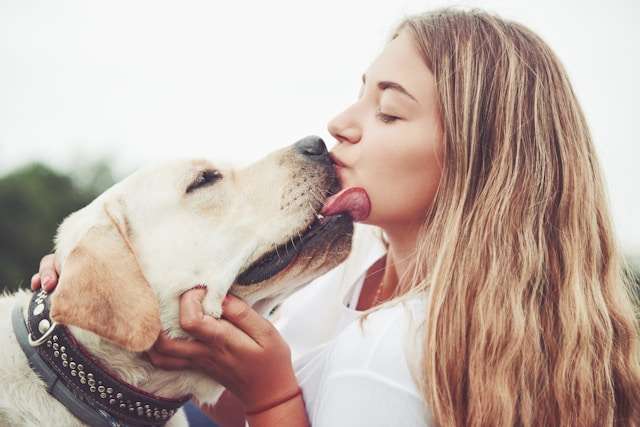



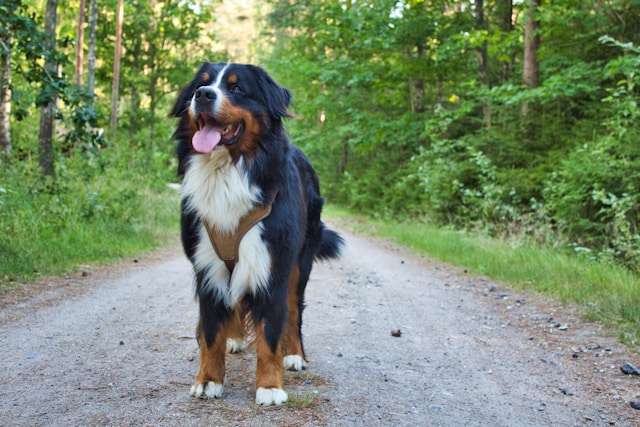
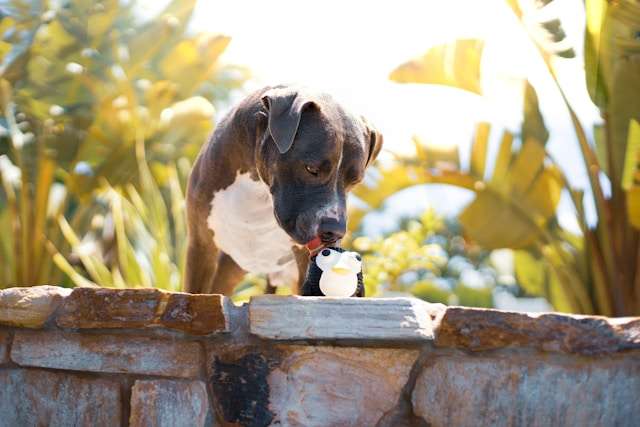
2 Comments